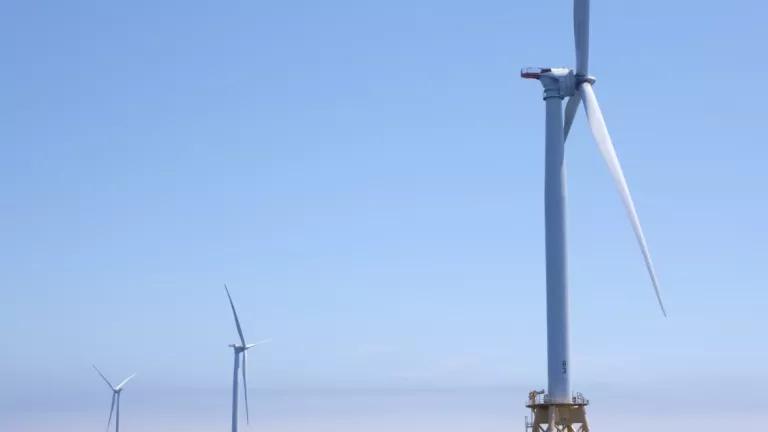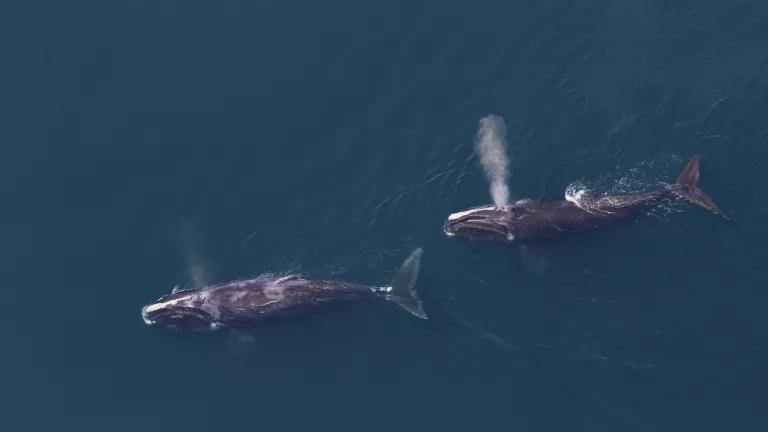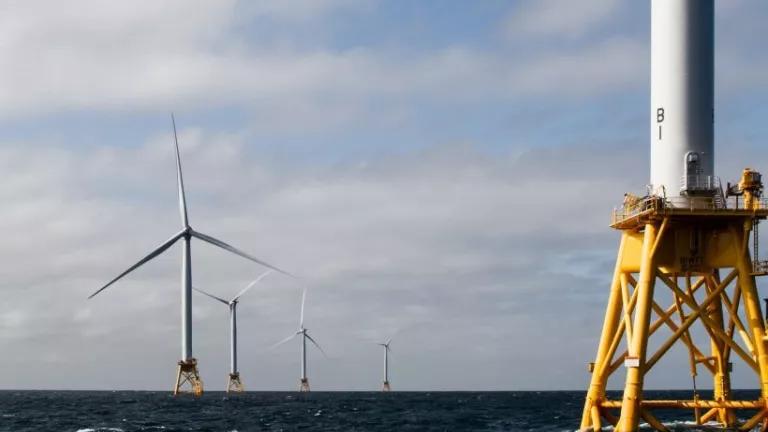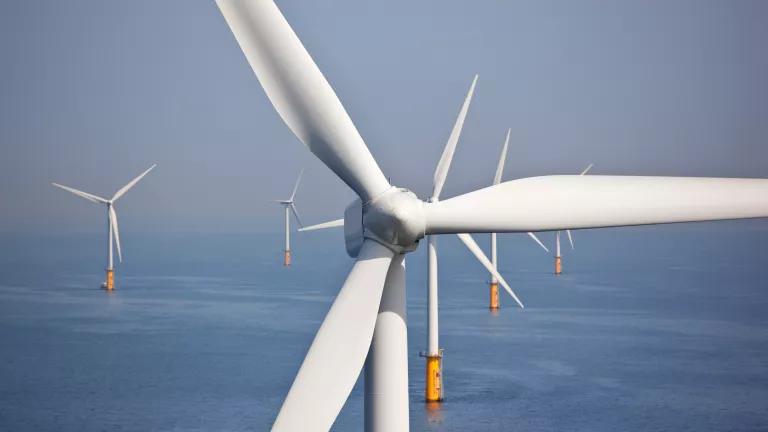Creating Win/Win Wind Outcomes with Technology
An expert process will develop technology review criteria to help build offshore wind faster while protecting ocean life.

Turbines on Block Island Wind Farm, located 3.8 miles from Block Island, Rhode Island in the Atlantic Ocean.
We need offshore wind, and we need to do it right. Worldwide, we are witnessing a historical transition toward a new renewable energy paradigm that offers a healthier, fossil fuel-free future. Offshore wind is critical to this energy transformation—and needed to hit U.S. state and federal carbon-free power targets that move us away from devastating “business as usual” climate change impacts. Offshore wind is generally stronger and more consistent than onshore wind, and often found near major coastal cities, where more than half of the U.S. population lives and energy needs are high.
But right now, only seven U.S. turbines spin offshore. Inflationary pressure, supply chain complications, canceled projects—the offshore wind industry’s growing pains have been front and center in the recent news. The future of offshore wind can feel uncertain. We must change this.
One piece of the solution is careful evaluation of potential technologies that can help us efficiently build out offshore wind while safeguarding marine life—from our largest whales to our smallest birds. A smart scientific review process to consider technology options is now taking shape.
Environmental groups, industry, and academics recently gathered at a summit convened by the Biden administration to focus on technology-based solutions for monitoring, detecting, and avoiding marine mammals during offshore wind development. The event announced a series of collaborative expert workshops to create a system to impartially review whether newer technological alternatives match the protection level offered by tried-and-true methods, like seasonal restrictions that avoid construction when endangered species are more likely to be in an area, or limiting noisy construction activities to times of high visibility, so that we can use sight as well as sound to detect whales.
Scientific performance criteria may not sound exciting, but it will allow us to responsibly validate new monitoring and mitigation technologies and methods quickly so that we can accelerate their commercialization and deployment. Industry, government, and environmental groups have been working collaboratively for years on ways protect ocean life while advancing offshore wind. This is another—and an important—step in that process.
Ocean life is struggling to adapt to the warmer, more acidic waters climate change has brought, while already stressed from decades of overfishing, pollution, and habitat destruction. We can and must construct and operate wind projects in a smart, protective way. To build offshore wind out while protecting marine life, we should evaluate the benefits from increasing the use of existing and emerging technologies like passive acoustic monitoring devices that monitor for whale calls; thermal cameras to detect whales at night; and software that uses machine learning to allow for reliable automated detection of whales.
The workshops are being led by the Regional Wildlife Science Collaborative for Offshore Wind (RWSC) in partnership with the U.S. Department of Energy (DOE) National Laboratories, and support from the DOE and contributions the National Oceanic and Atmospheric Administration and the Bureau of Ocean Energy Management. RWSC is a multi-sector collective of federal agencies, Atlantic coast states, offshore wind companies, and environmental nonprofits, that coordinates, fosters, and funds offshore wind and wildlife research. RWSC provides a neutral space for transparent discussion of scientific offshore wind impact findings and needs.
Smart technologies can also help other industries operating offshore do so more protectively, buoying the wind industry while building in benefits for ocean life. But we must look before we leap. Scientific validation and peer review are needed before substituting a technology for existing, proven safeguards.
We don’t need to choose between clean energy development and wildlife protections, and America can be the model for smarter, protective offshore wind. With a collective of agencies, developers, academics, and NGOs all pulling together, we can get offshore wind up and running responsibly—and keep the future bright and fossil fuel free.




